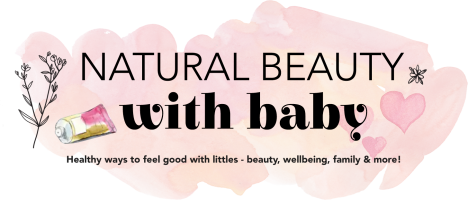“From Symptoms to Sobriety: A Guide to Crack Addiction Treatment” is a collaborative post.
Crack cocaine remains one of the most dangerous and addictive substances in the United States. It’s rapid, intense, high can quickly trap individuals in a cycle of dependence that affects their physical health, mental stability, and personal relationships.
Families often struggle to understand what is happening and how to respond, while individuals facing addiction may feel powerless to break free.
The good news is that help exists. From structured addiction treatment programs to supportive rehab centers near you, resources are available for those ready to begin the journey toward healing.
Understanding the signs of drug addiction, exploring options for substance abuse recovery, and embracing a long-term sobriety journey are critical first steps.
Recovery from addiction is not only possible but achievable with the right guidance and support.
What Are the Signs of Crack Addiction?
Crack cocaine affects people differently, but several crack addiction symptoms are commonly reported. Recognizing these early can make all the difference in getting timely help.
Physical symptoms of crack addiction may include:
- Sudden, extreme weight loss.
- Dilated pupils and heightened alertness.
- Blisters or burns on the lips and fingers from smoking crack pipes.
- Nosebleeds or respiratory problems from inhalation.
Behavioral signs of crack use often include:
- Mood swings ranging from euphoria to aggression.
- Paranoia or hallucinations.
- Neglecting responsibilities at work or home.
- Entertaining illegal activities to obtain more drugs.
Social and lifestyle impacts include:
- Strained family and romantic relationships.
- Financial struggles from constant drug-seeking.
- Isolation from friends who do not use drugs.
- Declining performance at work or school.
If you notice these signs of alcohol abuse in yourself or a loved one, it may indicate a deeper problem. Identifying the signs of drug addiction is the first stage of drug abuse recovery.
Why Is Substance So Addictive?
Crack cocaine is a crystallized form of cocaine that delivers a powerful and immediate rush. Unlike powdered cocaine, which is typically snorted, crack is smoked. This lets the drug to reach the brain in seconds, producing an intense surge of dopamine, the brain’s “feel-good” chemical.
The problem lies in what happens next:
- The high fades within minutes, leading to a crash of exhaustion, depression, and cravings.
- This cycle of “rush and crash” drives repeated use, often in binge patterns.
- With time, the brain becomes incapable of producing dopamine naturally, creating dependence.
Because of these effects, even short-term use can lead to severe addiction. The longer someone uses it, the harder it becomes to quit without professional help.
How to Recognize the Need for Treatment
Many people who use crack may convince themselves they are in control, but the transition from casual use to full-blown addiction can happen quickly. Warning signs that treatment is necessary include:
- Using crack despite knowing its harmful effects.
- Failed attempts to cut down or quit.
- Experiencing withdrawal symptoms when not using.
- Prioritizing crack over responsibilities and relationships.
Barriers to seeking help often include stigma, fear of judgment, and lack of access to care. However, delaying treatment only deepens dependence.
Families and friends can play a role by encouraging loved ones to seek help and by offering nonjudgmental support.
What Does Crack Withdrawal Look Like?
When someone stops using, their body and brain struggle to adjust without the drug.
Common crack withdrawal symptoms include:
- Depression and anxiety
- Fatigue and lack of motivation
- Insomnia or oversleeping
- Intense cravings for crack
- Irritability and restlessness
The severity of these symptoms often drives people back to using. That’s why professional alcohol withdrawal help is so critical. Medical supervision, counseling, and structured environments reduce the risk of relapse during this vulnerable period.
What Are the Options for Addiction Treatment?
Treatment for addiction includes different approaches depending on individual needs.
1. Detox Programs
- Provide medically supervised withdrawal support.
- Address physical dependency safely.
- Often serves as the first step before entering longer treatment.
2. Inpatient Rehab
- Offers structured environments with 24/7 care.
- Includes therapy, group sessions, and wellness activities.
- Removes individuals from triggers and unsafe environments.
3. Outpatient Treatment
- Allows individuals to continue living at home.
- Offers flexibility for work, school, or family responsibilities.
- Best for those with strong support systems.
4. Specialized Rehab for Crack Users
- Focuses on the unique psychological and social aspects of crack dependence.
- Provides targeted therapies and relapse prevention planning.
Professional substance abuse treatment is essential for breaking free from crack dependence, whether through inpatient or outpatient programs.
How Does Counseling Support Recovery?
While detox manages the physical aspects of addiction, addiction counseling helps heal the mind and spirit. Therapy gives individuals the tools to understand triggers, manage cravings, and rebuild self-worth.
For many people, addiction is closely tied to past trauma—whether from childhood, relationships, or other painful experiences. Trauma therapy helps individuals process these deep wounds in a safe and supportive setting.
By addressing the root causes of emotional pain, trauma therapy in hawaii, or elsewhere, can reduce the urge to self-medicate with drugs and build healthier ways of coping. Healing from trauma not only supports recovery but also restores a sense of self-worth and hope for the future.
Types of counseling often used in crack addiction recovery include:
- Individual therapy: Private sessions to explore personal struggles and coping strategies.
- Group therapy: Shared experiences that foster accountability and reduce isolation.
- Family therapy: Helps loved ones rebuild trust and communication.
- Cognitive Behavioral Therapy (CBT): Teaches individuals to replace harmful thought patterns with healthier ones.
- Motivational Interviewing: Encourages commitment to change without judgment.
Counseling plays a vital role not only in achieving sobriety but also in maintaining it long term.
How To Aim for Long-Term Sobriety?
Getting sober is one milestone, but staying sober is another. Recovery from crack addiction requires ongoing commitment, self-awareness, and community support.
Key strategies for relapse prevention include:
- Identifying triggers and developing healthy coping skills.
- Creating daily routines that encourage stability.
- Avoiding high-risk environments and old drug-using contacts.
- Enrolling in peer support groups like Narcotics Anonymous.
Lifestyle changes to support recovery:
- Exercise and physical wellness.
- A balanced diet to restore energy and health.
- Stress management practices such as meditation.
- New hobbies and goals that bring purpose.
Maintaining long-term sobriety is about rebuilding life with stability, fulfillment, and hope. Every long-term sobriety journey is unique, but professional guidance, peer support, and healthy routines significantly increase success rates.
How Families and Friends Can Help
Loved ones often feel helpless when witnessing addiction. But with the right approach, families and friends can make a positive difference.
Ways to provide healthy support:
- Express concern without judgment or blame.
- Avoid enabling behavior, such as giving money that may be used for drugs.
- Set clear boundaries to protect your own well-being.
- Encourage professional help and accompany them to appointments.
- Join support groups for families impacted by addiction.
Families who educate themselves about crack addiction and participate in counseling are often better equipped to support a loved one’s recovery.
Bottom Line
Crack cocaine addiction can devastate individuals, families, and communities. But with awareness, compassion, and the right resources, recovery is possible. By learning to recognize the signs of crack use, seeking addiction treatment, and committing to a structured plan, individuals can break free from dependence and embrace a future of healing.
A long-term sobriety journey is not without challenges, but every step forward is a victory. If you or a loved one is struggling, remember that you do not have to face this alone.
Professional support, counseling, and community resources are available to help guide the way from symptoms to sobriety.







Comments are closed.